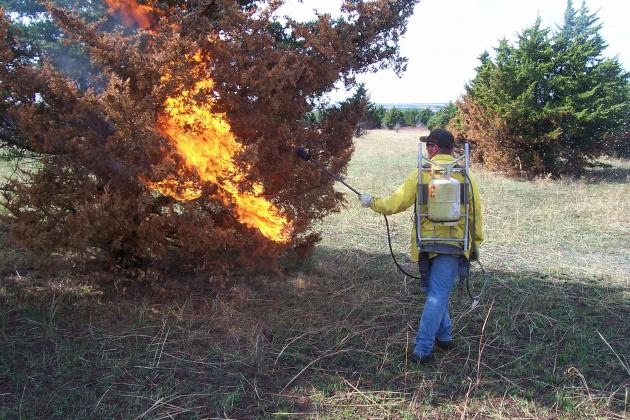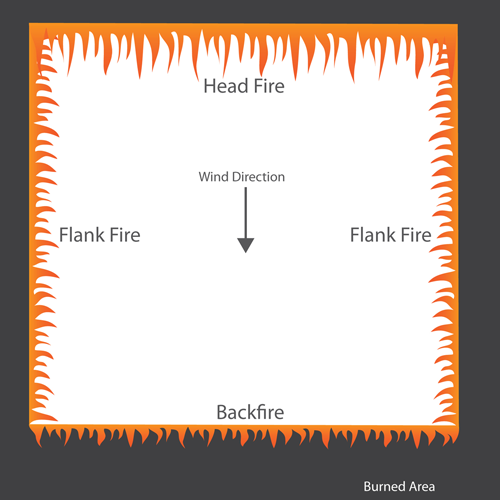Prescribed fire is the most economical method to control ash juniper and eastern redcedar in the Great Plains. But many times these trees are too large by the time land managers use fire to control them. In this case, the lower leaves will turn brown and eventually fall off with the remaining upper portion of the tree staying green and living. Shortly after a prescribed fire is conducted, when the lower leaves of these juniper trees become brown, is a good time to conduct individual tree ignition.
Individual scorched-tree ignition is a very economical follow-up to prescribed burning and can be done over a period of several weeks. Ignition of these trees can be accomplished with a propane weed burner torch, drip torch, hand held propane or MAP gas torch. It is best to do individual tree ignition when the wind is very light or calm so the heat and flames can draw straight up into the crown of the tree, killing the entire tree.
Remember to have fire fighting equipment on stand by in case embers from crowning trees drift into unburned areas. Also be sure to notify the local authorities and neighbors before re-burning trees. The the smoke and flames that this technique creates from crowning trees will be visible to neighbors. Always be sure to follow all local and state laws regarding the use of fire.
To watch a short video about individual tree cedar control using fire, go to the following video link: http://www.youtube.com/watch?v=am6yXl-paQ8&feature=player_detailpage
For more information about individual tree cedar control using fire, see the Oklahoma State University Extension fact sheet NREM-5053 Cedar Control by Individual Scorched-tree Ignition Following Fire http://pods.dasnr.okstate.edu/docushare/dsweb/Get/Document-7936/NREM-5053.pdf

With proper conditions you can ignite a single point on smaller trees or several point on larger trees along the browned lower branches on the upwind side.

Re-igniting unburned cedars following a prescribed fire is a safe, effective and very economical method of controlling larger cedars.

